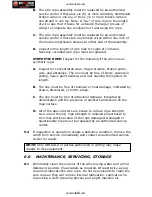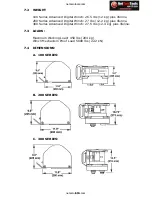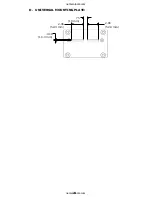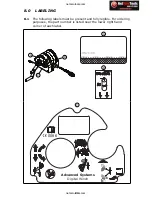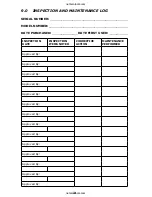
12
D. WINCH REMOVAL:
Disconnect the lifeline from the worker’s
harness or from the material load. Maintain at least a 10 lb.
(4.5 kg) load on the lifeline winding the lifeline onto the
drum. Retract the lifeline through the support structure. See
the support structure user instructions. Continue to wind the
lifeline onto the drum until the copper ferrules and thimble
contact the drum. Disconnect the winch from the support
structure. Refer to the support structure user instructions for
details.
3.6 LOAD
ATTACHMENT:
Pull on the snap hook while cranking the
handle counterclockwise to extend lifeline until there is suf
fi
cient
line to comfortably attach to the worker or load. Perform the
attachment away from the entrance so there is no danger that the
worker or load will fall. Use two hands when attaching the lifeline;
one hand maintaining tension on the lifeline, the other to depress
the lock and open the gate on the snap hook. Insert the hook into
the harness D-ring. Release the gate and ensure the snap hook is
securely locked onto the D-ring.
3.7 SYSTEM
INTEGRITY:
Verify the integrity of the attachment and
support system as follows:
A.
Crank the winch handle in the raise direction until the line is snug.
The worker should slowly transfer their weight to the harness and
lifeline until they are able to lift both feet off the ground.
B.
Make sure the winch holds the worker in a stationary position.
Also adjust the fit of the harness at this time so that it does
not pinch, chafe or bind.
IMPORTANT:
Do not use winch for lifting or lowering of more than one
person, except for emergency situations. The maximum lifting force is
450 lbs. (2.0 Kn)
3.8 LOWERING A WORKER:
The attendant should turn the winch
handle counterclockwise to pay out the lifeline. The attendant
should keep a gloved hand on the lifeline as it extends to keep a
slight tension on the lifeline.
If the line becomes tight or slack during use, communicate with
the suspended worker to determine whether there is a problem.
Correct any problems before proceeding.
WARNING:
If the cranking tension eases during lowering, the person
or material being lowered has reached a work level or obstruction.
Do not continue cranking without communicating with the person or
checking the material being lowered. Always keep the cable tension
fi
rm. Slack cable could cause a free fall.
netzerotools.com
netzerotools.com

















